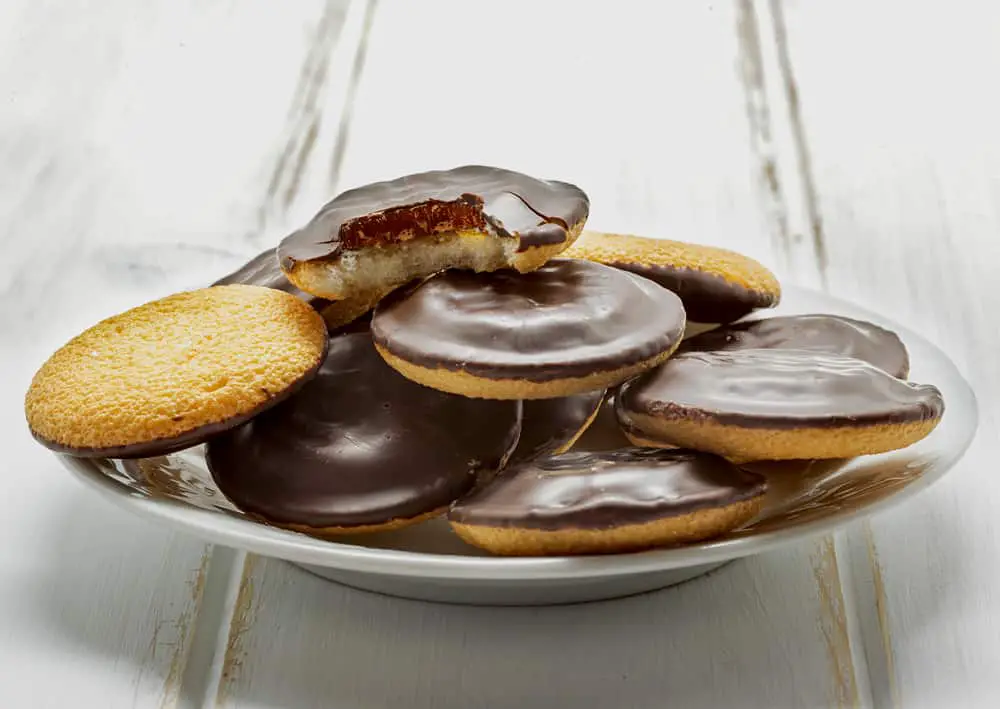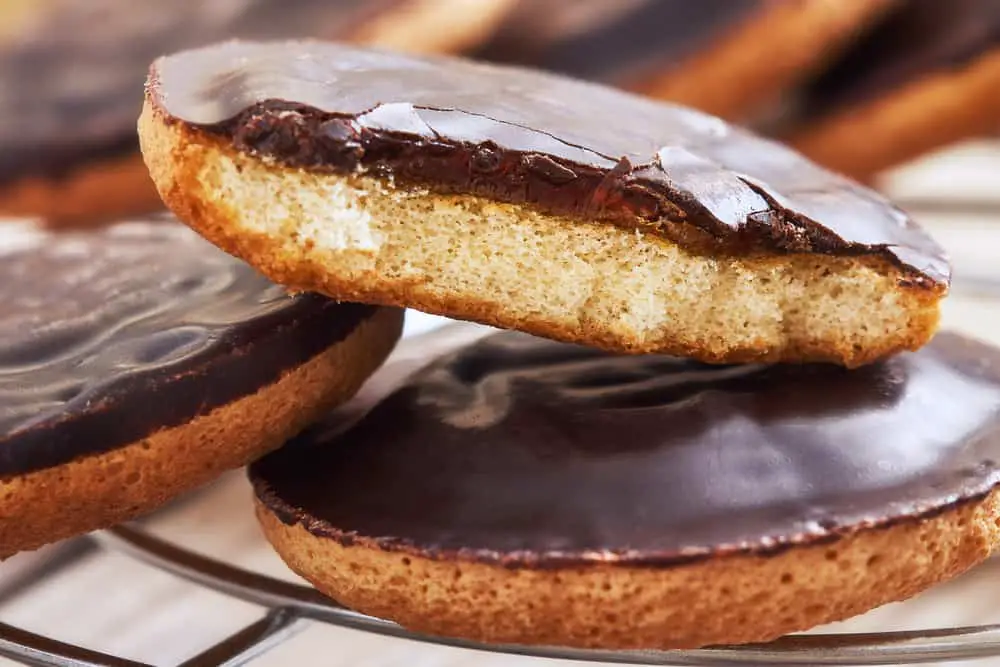It’s incredible how the world sometimes gets fixated on seemingly trivial things, and this has certainly been the case with Jaffa Cakes. But let’s back up a bit: Is something really trivial if it has implications running into millions of dollars (or pounds)? Here’s the low-down on the story of Jaffa Cakes.
All About Jaffa Cakes: Sweet Treats from the UK
Before we dive right in, it’s best first to know what Jaffa Cakes are, why they are so famous, and where they come from.
What Is a Jaffa Cake?

A Jaffa Cake is a small, round, three-component cake introduced in the United Kingdom in 1927 by McVitie’s & Price. Jaffa Cakes are aptly named after Jaffa oranges.
The three components of the cake are a sponge cake layer, a topping layer of sweet orange marmalade or orange zest, and a finishing layer of plain chocolate (also called semi-sweet chocolate in some places).
Jaffa Cakes have been famous for the longest time for their suitability as a quick snack, which is how people typically eat them. The recipe is simple, meaning many people can adapt it and make their own Jaffa treats at home.
Jaffa Cakes have also been made famous because of an “external identity crisis,” in which one camp identified them as biscuits and the other as cakes.
Jaffa Cake Physical Properties
Jaffa Cakes feature three components: a sponge layer, orange jelly, and plain chocolate covering.
The sponge part is an aerated thin cake batter made of the usual cake mix ingredients like flour, sugar, and eggs. You can add many other small ingredients or substitutes with homemade recipe adaptations.
Covering the sponge cake is a thin orange jelly layer. Adapted recipes usually feature an orange jelly disc in this layer.
The third layer features a plain chocolate coating over the jelly layer. The chocolate coating is usually made in a crisscross pattern.
British Cakes vs. British Biscuits
Before we go any further, it’s worth mentioning the basic classification differences between cakes and biscuits in the United Kingdom.
British cakes are a staple food item that is zero-rated for Value Added Tax (VAT). VAT is thus not payable on chocolate-covered cakes in the UK.
On the other hand, biscuits are considered a luxury and are standard-rated. Chocolate-covered biscuits thus attract a VAT levy in the United Kingdom.
Is Jaffa Cake a Biscuit or a Cake?

There have been two conflicting identities centered around the classification of Jaffa Cakes for tax purposes.
The most unique views of the biscuit camp and its cake camp counterpart came into the public limelight in 1991 when the Custom and Excise of Her Majesty posited that the treats were not cakes but biscuits.
Customs and Excise declared that Jaffa Cakes were partly chocolate-covered biscuits that should be taxed at standard-rate.
The pro-biscuit standpoint was based on several arguments:
- Jaffa Cakes were sold in biscuit aisles and not cake aisles in stores
- The packaging for Jaffa Cakes resembles that of biscuits
- Jaffa Cake advertising is similar to that of biscuits
- Jaffa Cakes are relatively small, the size of biscuits rather than traditional cakes
- People eat Jaffa Cakes by hand instead of with a fork, which is how cakes are eaten
Jaffa Cake Court Case
McVitie’s appealed the Customs and Excise decision, prompting a court case where the company supported its “Jaffa Cakes are cakes” position with the following arguments:
- Jaffa Cakes are softer, and their texture is tearable, unlike biscuits that are crisp and easy to take apart by snapping them in half.
- Jaffa Cakes use the same ingredients as traditional sponge cakes: sugar, eggs, and flour. These are made into a thin cake mix. In contrast, biscuits use thicker dough.
- When Jaffa Cakes go stale, they harden, like any other cake. When biscuits go stale, they get soft.
- McVitie’s even made a giant Jaffa Cake to prove that size isn’t a determining factor.
A thorough assessment of Jaffa Cakes followed as the route to resolve the conflict. They considered the following aspects of the cakes:
- The name
- The ingredients used
- The texture of the product when fresh
- The texture of the product when stale
- The size of the product
- The physical structure of the product
- The marketing of the product
- The selling system for the product in stores
After the evaluations, the court ruled in favor of McVitie’s. Jaffa Cakes thus became legally identified as cakes, exempting the company from VAT payments in the UK for the cakes.
Additionally, the Irish Revenue Commissioners agreed that Jaffa Cakes are cakes because they have a moisture content higher than 12%.
For now, UK fans of the famous British snack can keep enjoying the product, most probably “The Cake in the Biscuit Aisle,” since this selling system is already deep-rooted.
So, where do you camp? Is a Jaffa Cake truly a cake, or is it a biscuit?
